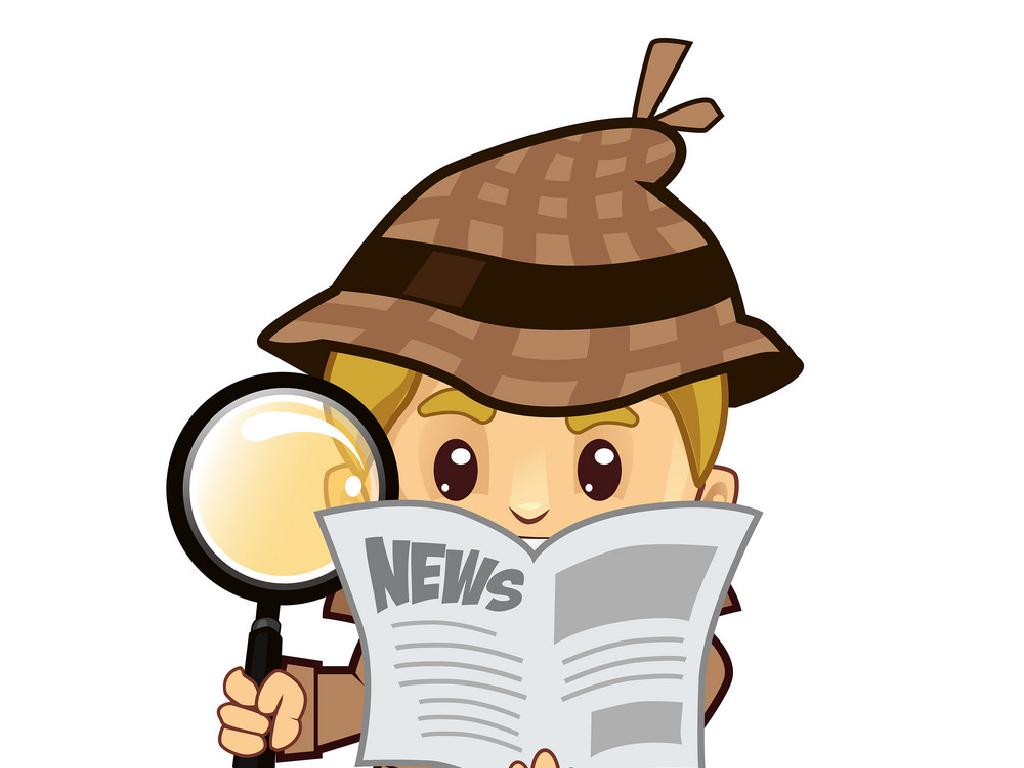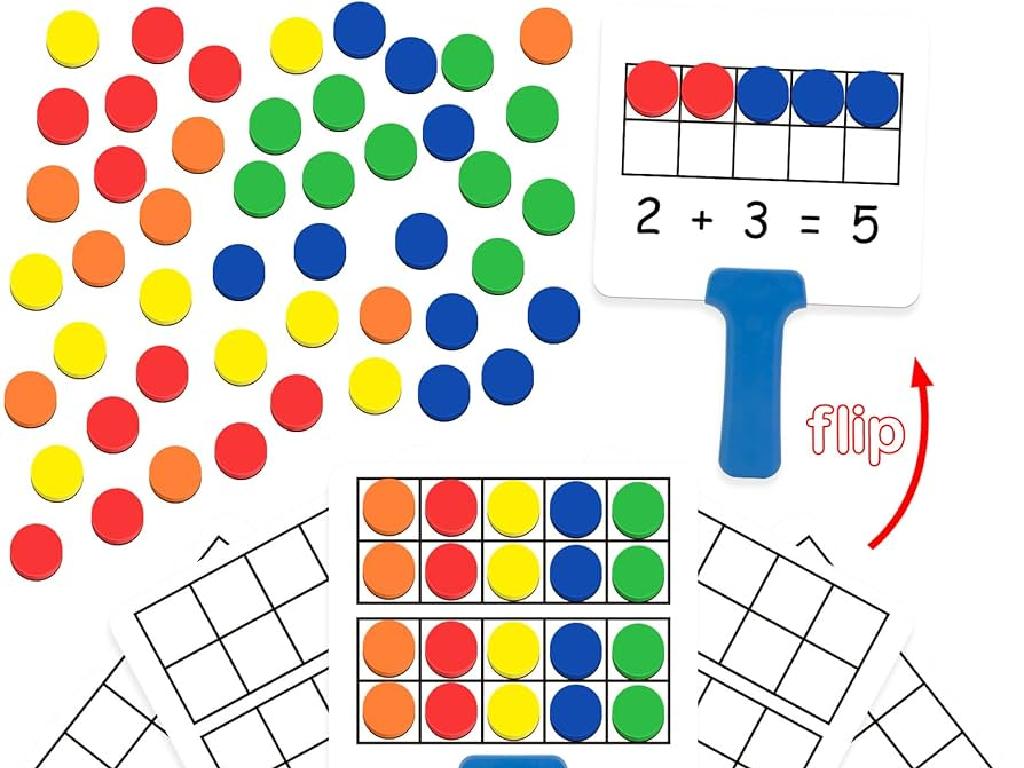Select Three-Dimensional Shapes
Subject: Math
Grade: Kindergarten
Topic: Three-Dimensional Shapes
Please LOG IN to download the presentation. Access is available to registered users only.
View More Content
Welcome to 3D Shapes!
– Greet our little explorers
– Today’s shape adventure
– Exploring 3D shapes
– Shapes that have length, width, and height
– Understanding 3D shapes
– Like balls, boxes, and cans we see every day
|
This slide is designed to introduce Kindergarten students to the concept of three-dimensional shapes in a fun and engaging way. Start the lesson with a warm greeting to make the little explorers excited about the day’s learning adventure. Explain that unlike flat shapes, 3D shapes have three dimensions: length, width, and height. Use everyday objects that the children are familiar with, such as balls (spheres), boxes (cubes), and cans (cylinders), to help them relate to the concept. Encourage the children to touch and hold different 3D shapes to understand how they differ from 2D shapes. The goal is to create a memorable experience that will help them recognize and name 3D shapes in their environment.
Meet the 3D Shapes
– Cube: A boxy shape
– Think of a dice or a little block
– Sphere: A round shape
– Just like a ball you roll or an orange
– Cylinder: A can-like shape
– Looks like a soup can or a drum
– Cone: A pointy-topped shape
– Similar to a party hat or yummy ice cream cone
|
This slide introduces Kindergarten students to basic three-dimensional shapes. Use tangible examples that the children are familiar with to help them recognize each shape. A cube is like the blocks they play with, a sphere is like the balls they roll, a cylinder is like the cans in their pantry, and a cone is like the ice cream cones they enjoy. Encourage the students to touch and hold objects that match these shapes to better understand the concept. During the presentation, have real-life examples of each shape for the children to interact with, if possible. This tactile experience will help solidify their understanding of 3D shapes.
Exploring 3D Shapes
– Faces of 3D shapes
– Like the sides of a box
– Edges: where faces meet
– The line where two sides join
– Vertices: corner points
– Where several edges meet, like a toy block’s corner
– Identifying shapes by characteristics
|
This slide introduces the basic characteristics of three-dimensional shapes to Kindergarten students. Begin by explaining that faces are the flat surfaces of a shape, similar to the sides of a box they might play with. Edges are the lines where two faces meet, like the edges of a book. Vertices are the points where edges meet, similar to the corners of a toy block. Use tangible examples that children can touch and see. Encourage students to bring their favorite 3D-shaped toy and discuss its faces, edges, and vertices. This hands-on approach will help them understand and identify these characteristics in various objects.
Let’s Find 3D Shapes Around Us!
– Find a cube in the room
– Spot a sphere nearby
– Search for a cylinder
– Locate a cone in class
|
This slide is designed to engage Kindergarten students in a fun and interactive activity to identify three-dimensional shapes in their immediate environment. Encourage the students to look around the classroom and find real-life examples of 3D shapes such as cubes (like a dice or a box), spheres (like a ball), cylinders (like a can or a cup), and cones (like a party hat). This activity will help them to connect the geometric concepts they learn in class with the real world. Provide guidance and support as they explore the classroom, and ensure that each student has the opportunity to participate and identify a shape. This hands-on experience is crucial for their understanding of three-dimensional shapes and will aid in their ability to recognize these shapes outside of the classroom.
3D Shapes in Our World
– Houses as cubes
– Houses often have a cube shape
– Balls as spheres
– Balls are round like spheres
– Cans as cylinders
– Cans look like tall cylinders
– Cones in traffic
– Traffic cones are cone-shaped
|
This slide is designed to help Kindergarten students recognize and relate three-dimensional shapes to objects they see in their daily lives. By associating common items with geometric shapes, children can more easily understand the concept of three dimensions. A house can serve as an example of a cube because of its square faces. A ball is a perfect example of a sphere due to its round shape. Cans resemble cylinders with their circular bases and straight sides. Lastly, traffic cones help illustrate the shape of a cone with a circular base tapering to a point. Encourage the students to think of other objects that match these shapes to reinforce their learning.
Fun with 3D Shapes
– Build with 3D shape blocks
– Use blocks to make a tower or a house
– Sort shapes into groups
– Group the shapes by size or type
– Match shapes to daily objects
– Find objects that look like a sphere, cube, or cylinder
– Recognize shapes around us
|
This slide introduces kindergarteners to the concept of three-dimensional shapes through interactive activities. Encourage the children to use 3D shape blocks to construct simple structures, which helps them recognize and differentiate between shapes like cubes, spheres, and cylinders. Sorting activities will further reinforce their understanding by having them group shapes based on characteristics. Matching shapes with everyday objects connects classroom learning to the real world, making the lesson tangible and relatable. Provide a variety of common objects for this purpose. Lastly, prompt students to observe their environment and recognize shapes in context. For the teacher, prepare a set of 3D shape blocks, images of everyday objects, and a worksheet for sorting shapes. Ensure the activities are supervised and assist the children in identifying and verbalizing the shapes they work with.
Class Activity: Shape Hunt!
– Let’s hunt for 3D shapes
– Match objects to 3D shapes
– Find a sphere, cube, and cylinder in the room
– Draw the shapes on your sheet
– Use your Shape Hunt sheet to draw them
– Share your shapes with the class
|
This interactive activity is designed to help Kindergarten students recognize and identify three-dimensional shapes in their environment. Encourage the children to explore the classroom and find real-life examples of 3D shapes such as spheres, cubes, and cylinders. Provide each student with a Shape Hunt sheet where they can draw the objects they find corresponding to each shape. This hands-on approach reinforces their understanding of geometric concepts and allows them to apply what they’ve learned in a fun way. After the hunt, have a discussion where students can share their findings and talk about where they found each shape. Possible variations of the activity could include finding shapes in pairs, timing the hunt for added excitement, or even extending the hunt beyond the classroom if feasible.
Shape Explorers’ Achievement
– Congratulations, shape explorers!
– Recognize 3D shapes everywhere
– Look for cubes, spheres, and cylinders around you
– Shapes are all around us
– Keep exploring shapes in daily life
– Use toys, boxes, and balls to find shapes
|
This slide is meant to celebrate the students’ new ability to recognize three-dimensional shapes in their environment. It’s important to reinforce the idea that shapes are not just concepts they learn in class, but are also part of their everyday life. Encourage them to keep looking for shapes at home, in the park, or while traveling. You can suggest that they point out shapes during a car ride or while playing. This will help solidify their understanding and make learning fun. Remember to praise their efforts and encourage their natural curiosity.






